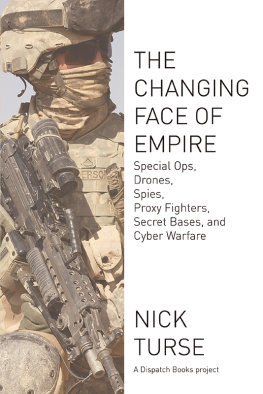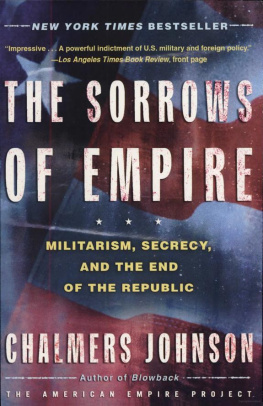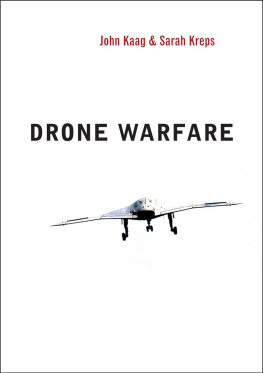The Changing Face of Empire
It looked like a scene out of a Hollywood movie. In the inky darkness, men in full combat gear, armed with automatic weapons and wearing night-vision goggles, grabbed hold of a thick, woven cable hanging from a MH-47 Chinook helicopter. Then, in a flash, each fast-roped down onto a ship below. Afterward, Mike, a Navy SEAL who would not give his last name, bragged to an Army public affairs sergeant that, when they were on their game, the SEALs could put 15 men on a ship this way in 30 seconds or less.
Once on the aft deck, the special ops troops broke into squads and methodically searched the ship as it bobbed in Jinhae Harbor, South Korea. Below deck and on the bridge, the commandos located several men and pointed their weapons at them, but nobody fired a shot. It was, after all, a training exercise.
All of those ship-searchers were SEALs, but not all of them were American. Some were from Naval Special Warfare Group 1 out of Coronado, California; others hailed from South Koreas Naval Special Brigade. The drill was part of Foal Eagle 2012, a multinational, joint-service exercise. It was also a model for and one small part of a much publicized U.S. military pivot from the Greater Middle East to Asia, a move that includes sending an initial contingent of 250 Marines to Darwin, Australia, basing littoral combat ships in Singapore, strengthening military ties with Vietnam and India, staging war games in the Philippines, and shifting the majority of the Navys ships to the Pacific by the end of the decade.
That modest training exercise also reflected another kind of pivot. The face of American-style war-fighting is once again changing. Forget full-scale invasions and large-footprint occupations on the Eurasian mainland; instead, think: special operations forces working on their own but also training or fighting beside allied militaries (if not outright proxy armies) in hot spots around the world. And along with those special ops advisors, trainers, and commandos expect ever more funds and efforts to flow into the militarization of spying and intelligence, the use of ever more drone aircraft, the launching of cyber-attacks, and joint Pentagon operations with increasingly militarized civilian government agencies.
Much of this has been noted in the media, but how it all fits together into what could be called the new global face of empire has escaped attention. And yet this represents nothing short of a new Obama doctrine, a six-point program for twenty-first-century war, American-style, that the administration is now carefully developing and honing. Its global scope is already breathtaking, if little recognized, and like Donald Rumsfelds military lite and David Petraeuss counterinsurgency operations, it is evidently going to have its day in the sun and like them, it will undoubtedly disappoint in ways that will surprise its creators.
The Blur-ness
For many years, the U.S. military has been talking up and promoting the concept of jointness. An Army helicopter landing Navy SEALs on a Korean ship catches some of this ethos at the tactical level. But the future, it seems, has something else in store. Think of it as blur-ness, a kind of organizational version of war-fighting in which a dominant Pentagon fuses its forces with other government agencies especially the CIA, the State Department, and the Drug Enforcement Administration in complex, overlapping missions around the globe.
In 2001, Secretary of Defense Donald Rumsfeld began his revolution in military affairs, steering the Pentagon toward a military-lite model of high-tech, agile forces. The concept came to a grim end in Iraqs embattled cities. A decade later, the last vestiges of its many failures continue to play out in a stalemated war in Afghanistan against a rag-tag minority insurgency that cant be beaten. In the years since, two secretaries of defense and a new president have presided over another transformation this one geared toward avoiding ruinous, large-scale land wars which the U.S. has consistently proven unable to win.
Under President Obama, the U.S. has expanded or launched numerous military campaigns most of them utilizing a mix of the six elements of twenty-first-century American war. Take the American war in Pakistan a poster-child for what might now be called the Obama formula, if not doctrine. Beginning as a highly-circumscribed drone assassination campaign backed by limited cross-border commando raids under the Bush administration, U.S. operations in Pakistan have expanded into something close to a full-scale robotic air war, complemented by cross-border helicopter attacks, CIA-funded kill teams of Afghan proxy forces, as well as boots-on-the-ground missions by elite special operations forces, including the SEAL raid that killed Osama bin Laden.
The CIA has conducted clandestine intelligence and surveillance missions in Pakistan, too, though its role may, in the future, be less important, thanks to Pentagon mission creep. In April 2012, in fact, Secretary of Defense Leon Panetta announced the creation of a new CIA-like espionage agency within the Pentagon called the Defense Clandestine Service. According to the Washington Post , its aim is to expand the militarys espionage efforts beyond war zones.
Over the last decade, the very notion of war zones has become remarkably muddled, mirroring the blurring of the missions and activities of the CIA and Pentagon. Analyzing the new agency and the broader convergence trend between Department of Defense and CIA missions, the Post noted that the blurring is also evident in the organizations upper ranks. Panetta previously served as CIA director, and that post is currently held by retired four-star Army Gen. David H. Petraeus.
Not to be outdone, the State Department, once the seat of diplomacy, continued on its long march to militarization (and marginalization) when it agreed to pool some of its resources with the Pentagon to create the Global Security Contingency Fund. That program will allow the Defense Department even greater say in how aid from Washington will flow to proxy forces in places like Yemen and the Horn of Africa.
One thing is certain: American war-making (along with its spies and its diplomats) is heading ever deeper into the shadows. Expect yet more clandestine operations in ever more places with, of course, ever more potential for blowback in the years ahead.
Shedding Light on the Dark Continent
One locale likely to see an influx of Pentagon spies in the coming years is Africa. Under President Obama, operations on the continent have accelerated far beyond the more limited interventions of the Bush years. 2011s war in Libya; a regional drone campaign with missions run out of airports and bases in Djibouti, Ethiopia, and the Indian Ocean archipelago nation of Seychelles; a flotilla of 30 ships in that ocean supporting regional operations; a multi-pronged military and CIA campaign against militants in Somalia, including intelligence operations, training for Somali agents, a secret prison, helicopter attacks, and U.S. commando raids; a massive influx of cash for counterterrorism operations across East Africa; a possible old-fashioned air war, carried out on the sly in the region using manned aircraft; tens of millions of dollars in arms for allied mercenaries and African troops; and a special ops expeditionary force (bolstered by State Department experts) dispatched to help capture or kill Lords Resistance Army leader Joseph Kony and his senior commanders, operating in Uganda, South Sudan, the Democratic Republic of the Congo, and the Central African Republic (where U.S. Special Forces now have a new base) only begins to scratch the surface of Washingtons fast-expanding plans and activities in the region.
Even less well known are other U.S. military efforts designed to train African forces for operations now considered integral to American interests on the continent. These include, for example, a mission by elite Force Recon Marines from the Special Purpose Marine Air Ground Task Force 12 (SPMAGTF-12) to train soldiers from the Uganda Peoples Defense Force, which supplies the majority of troops to the African Union Mission in Somalia.
Next page













